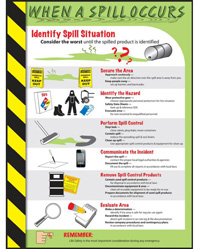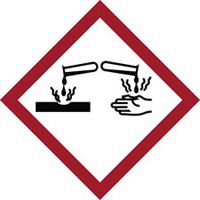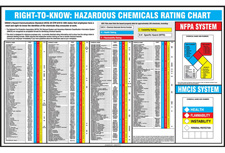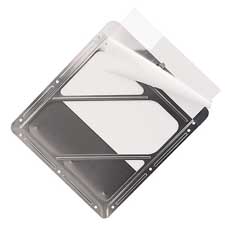| The Home page of ILPI's Safety Data Sheet (SDS) Resource, the leader in SDS information since 1995! | |
| The history and philosophy behind this resource. | |
| A curated collection of books and reference materials concerning Safety Data Sheets and closely related topics. | |
| Paste your plain text SDS into the SDS-Demystifier, and it will be converted into a hypertext-enriched document with links to detailed explanations of each key term. | |
| An extensive list of frequently asked questions about Safety Data Sheets including regulations, content, compliance, and more. | |
| A humorous take on Safety Data Sheet jargon. Fill in the blanks on our entry form to generate a personalized Unsafety Data Sheet to share with your coworkers. | |
| Since 1995, we've maintained this massive curated list of the best places to find Safety Data Sheets on the Internet. | |
| Way more than a glossary, this hypertext-enhanced resource covers hundreds of SDS-related terms and expert knowledge. Each entry includes both the SDS relevance and links to additional authoritative resources. | |
| Archived results of Safety Data Sheet related polls taken by some of our millions of site visitors | |
| You are here! The OSHA regulations behind SDS regulations, including the inspection guidelines and over 400 official interpretations letters under the Hazard Communication Standard | |
| Commercial suppliers of SDS authoring and management software as well as cloud compliance services. | |
| Commercial companies that will create SDS's for your specific needs as well as SDS translation companies. |

Safety signs, banners, and scoreboards? Get yours at Safety Emporium!
| Title: 05/15/1991 - Outer Shipping Container Labeling | |
| Record Type: Interpretation | Standard Number: 1910.1200 |
May 15, 1991
MEMORANDUM FOR: JOHN PHILLIPS REGIONAL ADMINISTRATOR
THROUGH: LEO CAREY, DIRECTOR, OFFICE OF FIELD PROGRAMS
FROM: PATRICIA K. CLARK, DIRECTOR, DIRECTORATE OF COMPLIANCE PROGRAMS
SUBJECT: Outer Shipping Container Labeling Under the HCS, 29 CFR 1910.1200
This is in response to your memo of December 12, 1990, to Leo Carey, requesting a review of an interpretation made by this office on container labeling requirements under the Hazard Communication Standard (HCS), 29 CFR 1910.1200. The Office of Field Programs forwarded your memo to us January 29, 1991, and asked us to respond to you directly.

Train your employees to respond to emergencies with colorful workplace safety posters from Safety Emporium.
At issue is our letter of November 9, 1990, to Mr. John W. Boyan, Acting Director, General Services Administration, Region 9. This letter stated OSHA's policy with regard to outside (shipping) container labeling as enforceable under the HCS, namely, that "there is no OSHA requirement for hazardous warning labels on the outer shipping container" but only on the actual container holding the hazardous chemical. Your memo expressed "great concern" that this interpretation may be contrary to the purpose of a label required under the HCS, which is to "serve as an immediate visual warning of the chemical hazards in the workplace."
As you are aware, subsequent to your memo of December 12, a Hazard Communication briefing session was held at the OSHA Training Institute (January 23-24) for all Regional Hazard Communication Coordinators. This issue was, at that time, discussed at length. While we agree with your concern that the lack of an outer shipping label may pose a hazard to employees working near and attempting to clean-up the spill from unlabeled leaking shipping containers, we nevertheless feel ours is the most enforceable interpretation that could be made, given the language of the HCS. "Container" is defined in the HCS as the vessel "or the like that contains a hazardous chemical" not something that holds a container or containers of hazardous chemical(s).
Additionally, if a shipping container held several hazardous chemicals, it is unclear what would be required, under the HCS, as the "appropriate hazard warning." Would a warning be required for each different container inside? Would a hazard analysis be required to determine an "appropriate hazard warning" for chemicals, which, if spilled or leaked, could present a combined or synergistic effect or hazard? These issues were addressed in detail during the recent briefing session; it was determined that the most preferred method for OSHA to enforce an outer shipping label requirement would be by amending the standard to specifically require this change.
Further, the Department of Transportation has enforcement authority over the labeling of outside shipping containers. The HCS specifically states that containers of hazardous chemicals leaving the workplace are to be labeled in such a way that does not conflict with the requirements of DOT's Hazardous Materials Transportation Act. DOT has recently revised its Hazardous Materials Regulations ("HMR," 49 CFR parts 171-180) with respect to what they refer to as "hazard communication requirements" (shipping paper descriptions, marking and labeling of packages, placarding of vehicles and bulk packagings, and emergency response communication) and classification and packaging requirements (see Federal Register, December 21, 1990, Vol. 55, No. 246, pgs. 52402-52729). These new regulations become effective October 1, 1991, after which time the Department will be enforcing both the old and newly-revised requirements, which are to be phased in over a five year period.
If during a workplace inspection, OSHA compliance personnel find that the chemical manufacturer is not labeling the outside shipping container, a referral should be made to the Research and Special Programs Administration of the DOT at the following address:
Department of Transportation - RSPA
Office of Hazardous Materials Transportation
Enforcement Division
400 Seventh Street, S.W.
Washington, D.C. 20590-0001
Telephone: (202) 366-4700
While we agree with Region VII's comment concerning the intent of the HCS (to supply as much information to potentially exposed employees as possible), our interpretation of this provision is consistent with the plain meaning of the standard. The field is free to encourage employers to exceed the basic requirements of the HCS and maximize the exchange of workplace hazard information by labeling shipping containers, again, in such a way that does not conflict with applicable DOT requirements.
We hope this clarifies this issue for you. If you have any further concerns, please feel free to contact Melody Sands of my staff at (FTS) 523-8036.

Get your GHS-compliant labels and signs from Safety Emporium.
January 29, 1991
MEMORANDUM FOR: PATRICIA K. CLARK, DIRECTOR, DIRECTORATE OF COMPLIANCE PROGRAMS
FROM: LEO CAREY, DIRECTOR, OFFICE OF FIELD PROGRAMS
SUBJECT: OSHA Requirements For Hazardous Warning Labels On Outer Shipping Containers Under 29 CFR 1910.1200
The attached memorandum from Region VII suggests that it may be appropriate to review a recent interpretation from your office regarding the Hazard Communication Standard container labeling requirements. Please consider the region's concern and respond to them, through this office, with your decision.
Thank you for your cooperation.
Attachments

Get your GHS-compliant labels and signs from Safety Emporium.
December 12, 1990
MEMORANDUM FOR: Leo Carey, Director, Office of Field Programs
FROM: Hershal W. Hensley , Acting Regional Administrator
SUBJECT: OSHA Requirements for hazardous Warning Labels on Outer Shipping Containers Under 29 CFR 1910.1200
This is in regard to a November 9, 1990 Compliance Programs interpretation to Mr. John W. Boyan, Acting Director, General Services Administration, Region 9, relative to OSHA container labelling requirements under the Hazard Communication Standard (HCS), 29 CFR 1910.1200.
In this letter, Compliance Programs concurs with an interpretation by Jennifer Miller of OSHA's Training Institute that "there is no OSHA requirement for hazardous warning labels on the outer shipping container." While the stated purpose of the label, according to the HCS, is to "serve as an immediate visual warning of the chemical hazards in the workplace," we have great concerns that the resulting lack of hazard information on, for example, the outer shipping container of a leaking inner container of a hazardous substance that is "known to be present" in the workplace, poses a hazard with significant potential for chemical injury or illness to employees attempting to clean-up the spill.
While enforcement of hazardous chemical labels may indeed be limited to the actual container holding the hazardous substance, we suggest that a review of this interpretation may be appropriate given the intent of the regulation.
Attachment
November 9, 1990
Mr. John W. Boyan
Acting Director
General Services Administration, Region 9
Western Distribution Center (9FS)
Rough and Ready Island, Building 414
Stockton, California 95203
Dear Mr. Boyan:
Thank you for your letter of October 24, regarding interpretation of the Occupational Safety and Health Administration's (OSHA) container labeling requirements under the Hazard Communication Standard (HCS), 29 CFR 1910.1200(f).

This poster from Safety Emporium contains NFPA numeric ratings for hundreds of common chemicals.
Your letter presents the following interpretation which you received from Ms. Jennifer Miller of OSHA's Training Institute regarding this issue:
"[The Occupational Safety and Health Administration, does not regulate the outer shipping container of hazardous material. The hazard warning labeling requirement is only enforced and limited to the actual container holding the hazardous substance, i.e. bottle, tube, can, jar, etc. There is no OSHA requirement for hazardous warning labels on the outer shipping container.]"
We concur with this interpretation but would like to stress that if the shipping container itself is the "actual container holding the hazardous substance" then it would have to be labeled in accordance with the requirements of the HCS. Further, section (f)(3) of the standard requires that:
Chemical manufacturers, importers, or distributors shall ensure that each container of hazardous chemicals leaving the workplace is labeled, tagged, or marked in accordance with this section in a manner which does not conflict with the requirements of the hazardous Materials Transportation Act (U.S.C. 1801 et seq.) and regulations issued under the Act by the Department of Transportation."
If the shipping container is the actual container holding the hazardous chemical, it would have to be labeled in accordance with the HCS, but labeled in such a way that the "appropriate hazard warning" did not interfere with any DOT required shipping labels or container shipping information.
We hope this clarifies this issue for you. For your further reference, we are enclosing a copy of OSHA's recently revised compliance instruction, CPL 2-2.38C [in context: CPL 2-2.38D | current regulation: CPL 02-02-079], "Inspection Procedures for the Hazard Communication Standard," (issued October 22, 1990). This document contains interpretative language and guidance on OSHA policies and procedures for compliance with the requirements of this performance-oriented standard. We hope this information is useful to you. Please feel free to contact us again if we can be of further assistance.
Sincerely,
Patricia K. Clark
Director
Directorate of Compliance Programs
Enclosure
October 24, 1990

These clear protective polyethylene shields for DOT placard holders from Safety Emporium can save you $$ on DOT placarding costs!
Patricia K. Clark, Director
Directorate of Compliance Programs
OSHA U.S. Department of Labor, Room N3461
Office of Health Compliance Assistance
200 Constitution Avenue, NW
Washington, D.C. 20210
Dear Ms. Clark:
This is to request your assistance in interpreting CFR 29 1910.1200 (f), Labels and Other Forms of Warning. Our Safety Officer has been in contact with your associates at the OSHA Technical Institute in Des Plains, Illinois. Ms. Jennifer Miller informed us that her interpretation of this regulation, after discussion with your office, is the following:
[The Occupational Safety and Health Administration, does not regulate the outer shipping container of hazardous material. The hazard warning labeling requirement is only enforced and limited to the actual container holding the hazardous substance, i.e. bottle, tube, can, jar, etc. There is no OSHA requirement for hazardous warning labels on the outer shipping container.]"
If you concur and find this to be factual, please forward your interpretation in writing to this office. This supportive document will be of tremendous value in resolving General Services Administration contractual, procurement, and shipping discrepancies.
Your assistance in this matter will be greatly appreciated. If you need to discuss this matter in greater detail please contact our Safety Officer, Linda Richison at FTS 463-6346/6347 or Commercial (209) 946-6346/6347 (Fax 463-6214).
Sincerely,
John W. Boyan
Acting Director
Western Distribution Center (9FS)
The original official public domain version of this document is available from OSHA at https://www.osha.gov/laws-regs/standardinterpretations/1991-05-15-1.